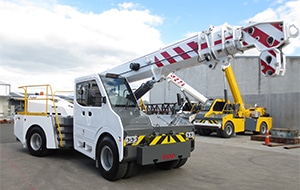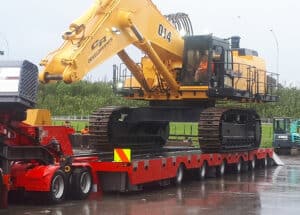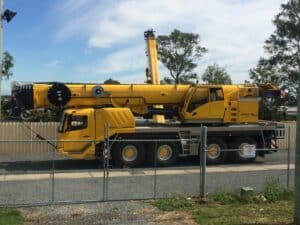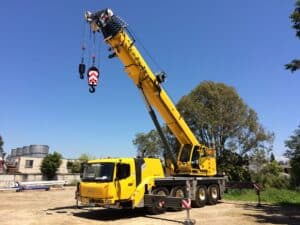The Complete Guide to All-Terrain Crane Hire in Australia
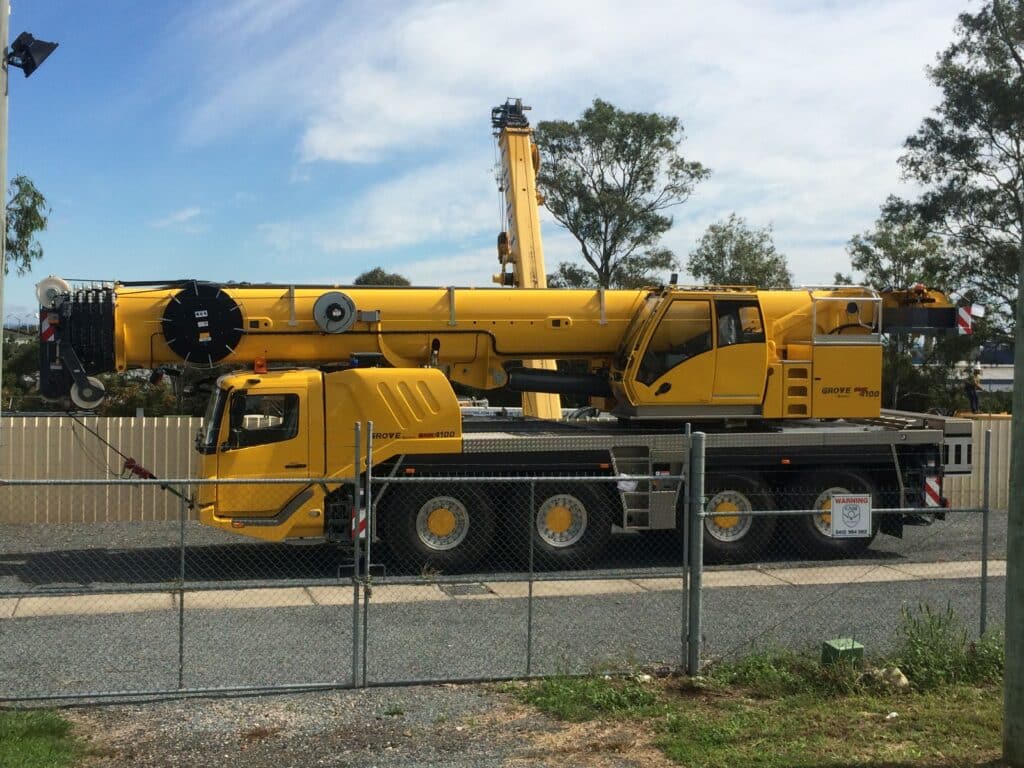
What Is an All-Terrain Crane?
Key Features and Design Specifications
All-terrain cranes are versatile, high-capacity lifting machines that combine the mobility of truck-mounted cranes with the off-road strength of rough terrain models. They are equipped with powerful telescopic booms, multiple axles, hydraulic suspension, and sophisticated steering systems. These features allow them to operate smoothly across sealed roads, rough construction sites, and uneven ground.
Differences from Other Crane Types
Unlike rough terrain cranes, all-terrain models can legally travel on public roads without additional transport vehicles or disassembly. Compared to mobile or crawler cranes, they offer a balance of speed, capacity, and adaptability. This makes them ideal for projects that require both long-distance travel and heavy lifting.
Why They’re Ideal for Australian Job Sites
Australia’s landscape ranges from urban density to remote outback terrain. All-terrain cranes perform reliably across these diverse conditions. Whether lifting HVAC systems onto rooftops in Sydney or servicing mining infrastructure in the Pilbara, their flexibility makes them an excellent choice nationwide.
Where All-Terrain Cranes Are Used in Australia
Common Industries and Project Types
All-terrain cranes are a go-to solution for construction, infrastructure, mining, oil and gas, and wind energy projects. Their ability to navigate tight access points and uneven surfaces makes them useful on everything from bridge builds to high-rise developments.
Examples from Mining, Infrastructure, and Energy Sectors
In the mining sector, they are frequently used for plant maintenance and machinery relocation. In infrastructure, they support roadworks, tunnel projects, and rail installations. In the renewables sector, they’re vital for erecting turbines and transporting large-scale solar infrastructure.
Use Cases in Both Urban and Remote Areas
In cities like Brisbane and Adelaide, all-terrain cranes help lift materials onto rooftops or install structural steel. In remote regions such as Northern Queensland or the Western Desert, they are crucial for setting up temporary camps, moving modular buildings, and lifting oversized loads where roads are unsealed.
Key Benefits of Hiring All-Terrain Cranes
Versatility Across Different Site Conditions
These cranes are built to handle a wide range of conditions, muddy access roads, steep inclines, tight job sites, and open highways. They reduce the need for additional equipment or support machinery.
High Mobility and Road Compliance
Most all-terrain cranes meet legal transport dimensions and weight requirements, allowing them to travel between job sites without the need for pilot vehicles or road escorts, saving both time and cost.
Reduced Need for Multiple Crane Types
Because of their wide operating range and lifting capacities, one all-terrain crane can often replace two or more specialised crane types, streamlining logistics and lowering project complexity.
Choosing the Right Crane for Your Australian Project
Assessing Lift Height, Load Capacity, and Terrain
Evaluate the size and weight of the loads, lifting radius, and required boom length. For instance, tall structures may need a fly jib or telescopic extension, while heavier lifts demand stronger base capacity and counterweights.
Considering Weather and Environmental Factors
Australia’s climate varies dramatically. Consider whether your crane will face extreme heat, high winds, humidity, or coastal corrosion. All terrain cranes built with weather resistance and dust protection are better suited for harsher environments.
Matching Crane Specs with Job Requirements
Ensure the crane matches your project’s operational demands. For example, a compact crane with high manoeuvrability is ideal for urban construction, while a larger model with high lifting capacity suits resource sector projects.

Understanding Crane Hire Options in Australia
Wet Hire vs Dry Hire: Pros and Cons
Wet hire includes both crane and qualified operator, which ensures safety and efficiency. Dry hire allows you to use your own crew but places responsibility for compliance and safety on your team. Wet hire is generally preferred for complex or high-risk projects.
Short-Term vs Long-Term Hire Considerations
Short-term hire suits emergency jobs or one-off lifts, while long-term hire provides better value for major builds or ongoing infrastructure work. Some providers offer discounts for long-term agreements or recurring project partnerships.
What’s Typically Included in a Crane Hire Contract
Standard contracts should outline crane model, specifications, operator qualifications (if wet hire), insurance coverage, transport arrangements, fuel, site access requirements, and daily rates. Clarify exclusions such as overtime, public holiday rates, or travel charges.
Costs and Pricing Factors for All Terrain Crane Hire
Average Rates in Major Australian Cities and Regions
Rates vary depending on crane size and location. In Sydney or Melbourne, expect higher base rates due to operational demand. Remote areas may add costs for mobilisation and site establishment. Typically, hire starts around AUD $200–$500 per hour, increasing with capacity.
Factors Affecting Crane Hire Costs
Pricing is influenced by crane size, project duration, travel time, operator qualifications, weather risk, and fuel usage. Lifts requiring special rigging or engineering input may also add cost.
How to Get Accurate Quotes and Avoid Hidden Fees
Request a detailed, itemised quote that includes mobilisation, demobilisation, standby time, crew allowances, and overtime. Ask if fuel is included and clarify GST status. Confirm liability and insurance coverage to avoid surprises.
Licencing, Permits, and Legal Requirements
Operator Qualifications Under Australian Law
Crane operators must hold a valid High Risk Work Licence (class CN, C2, C6, C1, or CO) under state or territory legislation. Additional training, such as dogging or rigging certifications, may also be required depending on the lift.
Site Safety and Compliance Standards
Contractors must adhere to Safe Work Australia codes of practice and Australian Standards such as AS 2550. This includes site induction, lift plans, and SWMS documentation. Cranes must undergo regular inspection and maintenance logs must be up to date.
Transport and Access Permits for All-Terrain Cranes
While many all-terrain cranes are road-legal, larger models may still require oversize load permits or local council clearances. A reputable hire company should manage these logistics and liaise with authorities on your behalf.
How to Find a Reliable Crane Hire Provider in Australia
What to Look for in a Professional Crane Hire Company
Look for a provider with well-maintained equipment, certified staff, comprehensive insurance, and strong industry experience. Check memberships with industry bodies like the Crane Industry Council of Australia (CICA).
Questions to Ask Before Signing a Hire Agreement
Ask about safety record, equipment inspection history, cancellation policies, availability of backup cranes, and operator experience. Inquire about support in the event of breakdown or weather delays.
Red Flags and How to Avoid Unreliable Operators
Avoid companies offering vague pricing, unlicensed operators, poor communication, or lack of documentation. Always request references and check online reviews or industry testimonials.
Wrapping Up: Making the Most of All-Terrain Crane Hire
Summary of Key Considerations
Choosing the right all-terrain crane involves balancing performance, safety, compliance, and cost. Evaluate project needs carefully, assess terrain and weather, and work with experienced providers to ensure smooth operations.
Benefits for Productivity, Safety, and Cost-Efficiency
All-terrain cranes deliver excellent ROI through their adaptability, road-readiness, and lifting power. They reduce downtime, increase site flexibility, and enhance safety outcomes when used with trained personnel.
Encouragement to Plan Early and Choose Wisely
Planning your crane hire early ensures you secure the right equipment, meet compliance deadlines, and avoid project delays. Engage your crane hire company during the planning phase so they can offer lift studies, site advice, and mobilisation strategies tailored to your goals.


